Observando aves. Watching birds. [Esp/Eng]
Cormorán grande (Phalacrocorax carbo)
Great cormorant (Phalacrocorax carbo)
Buenísimos días a mis abejitas favoritas, hoy he podido fotografiar algunas especies de aves en mi paseo matutino, vamos a disfrutarlas...
Good morning to my favorite bees. Today I was able to photograph some bird species on my morning walk. Let's enjoy them...
Cormorán grande (Phalacrocorax carbo)
Great cormorant (Phalacrocorax carbo)
El cormorán grande: el rey de las aves negras y majestuosas
Imagina un ave negra y majestuosa, con una cola larga y una garganta amarillenta que parece decir: "Estoy aquí para impresionarte". ¡Eso es el cormorán grande! Con un peso que oscila entre 1,5 kg y 5,3 kg, este ave es un verdadero gigante de la naturaleza.
The Great Cormorant: The King of the Black and Majestic Birds
Imagine a majestic, black bird with a long tail and a yellowish throat that seems to say, "I'm here to impress you." That's the great cormorant! Weighing between 1.5 kg and 5.3 kg, this bird is a true giant of nature.
Cormorán grande (Phalacrocorax carbo)
Great cormorant (Phalacrocorax carbo)
Las dimensiones de un gigante
La longitud de este ave puede variar de 70 a 102 cm, y su envergadura alar es aún más impresionante, oscilando entre 121 y 160 cm. ¡Eso es como tener una ala como un avión pequeño! Los machos suelen ser más grandes y pesados que las hembras, pero no te preocupes, las hembras también son muy impresionantes.
The Dimensions of a Giant
This bird's length can range from 70 to 102 cm, and its wingspan is even more impressive, ranging from 121 to 160 cm. That's like having a wing like a small airplane! Males are usually larger and heavier than females, but don't worry, the females are also very impressive.
Gorrión común (Passer domesticus)
House Sparrow (Passer domesticus)
¡Bienvenidos al reino del gorrión común! Un ave pequeña pero con una personalidad grande, y un apetito aún mayor. Con un peso de alrededor de 30 g y una longitud de 14 a 16 cm, es como un robot de basura en miniatura.
El macho: un caballero con una mancha negra y un corazón de oro
El macho del gorrión común es un verdadero caballero. Su plumaje es gris en las partes inferiores, con una mancha negra en el pecho y la garganta que lo hace parecer un pequeño ladrón. Pero no te preocupes, es solo su forma de decir: "Estoy aquí para robar la comida de tus manos".
La hembra del gorrión común es una señora elegante y discreta. Su plumaje es gris casi uniforme en las partes inferiores y el pecho, como si estuviera vestida para un partido de golf. Pero no te engañes, es solo su forma de decir: "Estoy aquí para robar la comida de tus manos también".
Welcome to the kingdom of the house sparrow! A small bird with a big personality—and an even bigger appetite. Weighing around 30 g and measuring 14 to 16 cm in length, it's like a miniature garbage robot.
The male: a gentleman with a black patch and a heart of gold
The male house sparrow is a true gentleman. His plumage is gray on the underparts, with a black patch on the chest and throat that makes him look like a petty thief. But don't worry, it's just his way of saying, "I'm here to steal food out of your hands."
The female house sparrow is an elegant and understated lady. Her plumage is almost uniformly gray on the underparts and chest, as if she's dressed for a round of golf. But don't be fooled, it's just her way of saying, "I'm here to steal food out of your hands, too."
La garcilla bueyera (Ardea ibis)
The cattle egret (Ardea ibis)
La garceta bueyera: la garza más cool del planeta
¡Hola a todos! Quiero presentaros a la garceta bueyera, una garza pequeña y compacta que mide unos 46-56 centímetros de largo y pesa entre 270-512 gramos. ¡Eso es como un pollo gigante!
Pero no te preocupes, no es solo una garza cualquiera. Tiene un pico robusto y un cuello corto y ancho que suele tener encorvado, como si estuviera diciendo "hola, soy una garza cool".
Los adultos fuera de la época de cría tienen el plumaje prácticamente blanco, con el pico amarillo y las patas amarillo grisáceas. Pero cuando llega la época de apareamiento, se ponen coloridos como un arcoíris. Los machos desarrollan una coloración anaranjada en las plumas de la espalda, cuello y cresta, y el pico, las patas y el iris se tornan rojos. ¡Es como si se hubieran puesto un traje de fiesta!
La garceta bueyera es una garza muy versátil. Puede alimentarse en tierra, y ha perdido la capacidad de sus parientes acuáticos de compensar el efecto de la refracción en el agua. ¡Eso significa que puede ver bien en la oscuridad!
Y para terminar, la garceta bueyera emite una llamada sorda y gutural que suena como "rick-rack" en las colonias de cría. ¡Es como si estuviera diciendo "¡hola, amigos!"
Hello everyone! I'd like to introduce you to the cattle egret, a small, compact heron that measures about 46-56 centimeters long and weighs between 270-512 grams. That's like a giant chicken!
But don't worry, it's not just any heron. It has a stout beak and a short, wide neck that's usually curled up, as if to say "hello, I'm a cool heron."
Outside of the breeding season, adults have practically white plumage, with a yellow bill and grayish-yellow legs. But when mating season arrives, they turn rainbow-colored. Males develop an orange coloration on their back, neck, and crest feathers, and their bill, legs, and iris turn red. It's as if they've put on a party dress!
The cattle egret is a very versatile heron. It can feed on land, and has lost the ability of its aquatic relatives to compensate for the effect of refraction in water. That means it can see well in the dark!
And finally, the cattle egret emits a low, throaty call that sounds like "rick-rack" at breeding colonies. It's as if it's saying "hello, friends!"
Urraca común (Pica pica)
Common Magpie (Pica pica)
La Urraca Común: La Avanzada Inteligente del Pajarismo
La urraca común (Pica pica), también conocida como picaza, picaraza, marica, pega o hurraca, es una especie de ave paseriforme de la familia Corvidae que habita en Eurasia. Es una de las aves más comunes en Europa, vuela hasta una altitud no superior a los 1500 m s. n. m.
La Inteligencia Urraca
La urraca común es una de las aves más inteligentes, y se cree que es más inteligente que la gran mayoría de los animales. La extensión del cuerpo estriado de su encéfalo tiene el mismo tamaño relativo que el de los chimpancés, orangutanes y humanos.
Descripción
La urraca común destaca por su cuerpo blanco y negro iridiscente, acabado en una larga cola de color azul o verde metálico dependiendo de cómo incida el sol. Mide en torno a 45 cm de longitud con una envergadura de 60 cm. Es prácticamente inconfundible con otra ave.
Características
Cuerpo blanco y negro iridiscente
Larga cola de color azul o verde metálico
Pico recto y fuerte
Ojos pequeños
Alas cortas y redondeadas
Silueta parecida a la del rabilargo
Voz
Su voz es un matraqueo áspero: tcha-tcha-tcha-tcha-tcha.
Conclusión
La urraca común es una especie de ave paseriforme inteligente y fascinante. Su apariencia y comportamiento la hacen inconfundible con otras aves. ¡Es hora de conocer a esta avanzada del pajarismo!
The Common Magpie: The Intelligent Advance of Birdwatching
The common magpie (Pica pica), also known as the common magpie, is a species of passerine bird in the Corvidae family that lives in Eurasia. It is one of the most common birds in Europe, flying at altitudes no higher than 1,500 meters above sea level.
Magpie Intelligence
The common magpie is one of the most intelligent birds and is believed to be smarter than most animals. The extent of the striated corpus of its brain is the same relative size as that of chimpanzees, orangutans, and humans.
Description
The common magpie stands out for its iridescent black and white body, ending in a long, metallic blue or green tail depending on the direction of the sun. It measures around 45 cm in length with a wingspan of 60 cm. It's practically unmistakable for any other bird.
Characteristics
Iridescent black and white body
Long metallic blue or green tail
Straight, strong bill
Small eyes
Short, rounded wings
Silhouette similar to that of the Magpie
Voice
Its voice is a harsh, rattling tcha-tcha-tcha-tcha-tcha.
Conclusion
The common magpie is an intelligent and fascinating passerine bird species. Its appearance and behavior make it unmistakable for other birds. It's time to meet this pioneer of birdwatching!
Mirlo común (Turdus merula)
Common blackbird (Turdus merula)
El Mirlo: el Superhéroe de las Bardas
¡Atención, ciudadanos del mundo! Hoy les presento al mirlo, el ave más cool de la historia. Este pequeño superhéroe se distribuye por Europa, Asia y África del Norte, y ha sido introducido en Australia, Nueva Zelanda y América del Sur. ¡Es como si hubiera una red de mirlos secretos que están tomando el mundo!
El macho de la subespecie holotipo es como un personaje de cómic: completamente negro, con un pico amarillo brillante y un círculo amarillo alrededor de los ojos. Es como si llevara un traje de superhéroe. Mientras que las hembras adultas y los menores tienen un plumaje marrón, como si fueran los villanos de la historia.
The Blackbird: The Superhero of the Fence
Attention, citizens of the world! Today I introduce you to the blackbird, the coolest bird in history. This little superhero is found throughout Europe, Asia, and North Africa, and has been introduced to Australia, New Zealand, and South America. It's as if there's a network of secret blackbirds taking over the world!
The male of the holotype subspecies is like a comic book character: completely black, with a bright yellow beak and a yellow circle around its eyes. It's as if it's wearing a superhero costume. Adult females and juveniles have brown plumage, resembling the villains of the story.
Pato criollo (Cairina moschata)
Creole duck (Cairina moschata)
¡El pato criollo: el rey de la comedia!
¿Sabías que el pato criollo no es el mismo que el pato real?
¡Claro que no! Bueno, ya no lo sabes. En serio, el pato criollo y el pato real son dos subespecies diferentes de la misma especie, Cairina moschata. La subespecie silvestre, el pato real, es un pato grande con plumas negras lustrosas y un pico negro. Mide unos 76 cm de longitud y puede volar largas distancias.
¿Y qué hay de la subespecie doméstica?
La subespecie doméstica, el pato criollo, es una variante del pato real que se ha domesticado desde tiempos precolombinos. Es más pesado que su antecesor y ha perdido la capacidad de volar largas distancias. Su plumaje es menos lustroso y más variable, y puede ser blanco, negro, gris, marrón o cualquier combinación de estos colores.
¿Por qué es importante saber la diferencia entre el pato criollo y el pato real?
Bueno, si no sabes la diferencia entre ellos, puedes terminar llamando al pato criollo "pato real" y confundiendo a todos los expertos en aves. Además, el pato real es una especie silvestre protegida en muchos países, por lo que es importante no confundirlo con su variante doméstica, el pato criollo.
¡Así que, en resumen!
El pato criollo es una subespecie doméstica de la especie Cairina moschata, mientras que el pato real es la subespecie silvestre. Ambas tienen características diferentes, y es importante saber la diferencia entre ellas para evitar confusiones.
The Muscovy Duck: The King of Comedy!
Did you know that the Muscovy duck is not the same as the mallard?
Of course not! Well, you don't know anymore. Seriously, the Muscovy duck and the mallard are two different subspecies of the same species, Cairina moschata. The wild subspecies, the Muscovy duck, is a large duck with glossy black feathers and a black beak. It measures about 76 cm in length and can fly long distances.
And what about the domestic subspecies?
The domestic subspecies, the Muscovy duck, is a variant of the Muscovy duck that has been domesticated since pre-Columbian times. It is heavier than its ancestor and has lost the ability to fly long distances. Its plumage is less glossy and more variable, and can be white, black, gray, brown, or any combination of these colors.
Why is it important to know the difference between the Muscovy duck and the mallard?
Well, if you don't know the difference between them, you might end up calling the Muscovy duck a "rogue duck" and confusing all the bird experts. Furthermore, the Muscovy duck is a protected wild species in many countries, so it's important not to confuse it with its domesticated counterpart, the Muscovy duck.
So, in summary!
The Muscovy duck is a domestic subspecies of the Cairina moschata species, while the Muscovy duck is the wild subspecies. Both have different characteristics, and it's important to know the difference between them to avoid confusion.
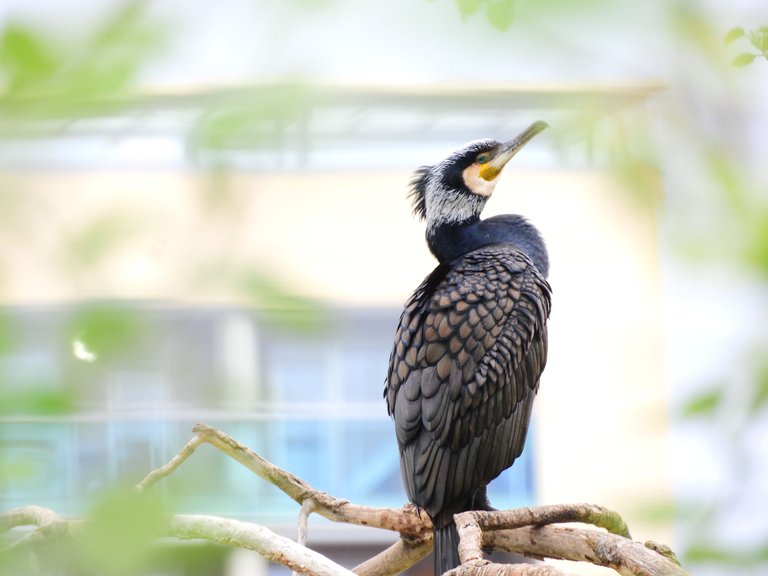

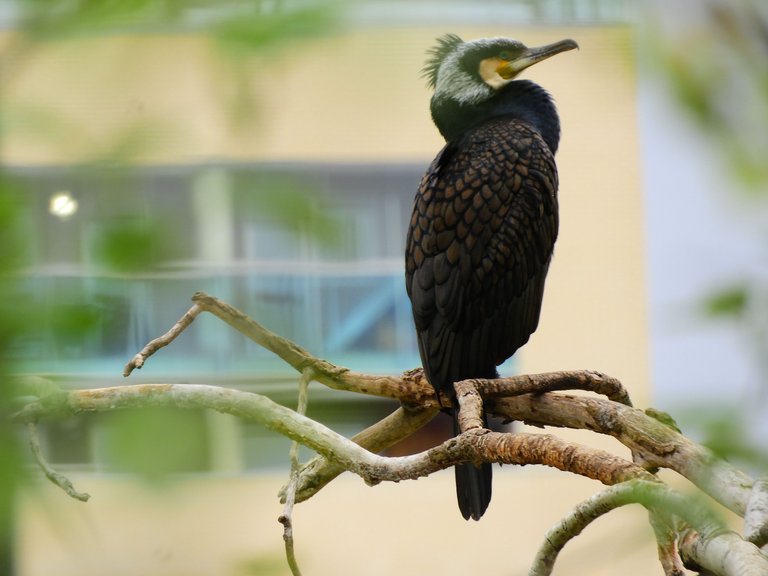
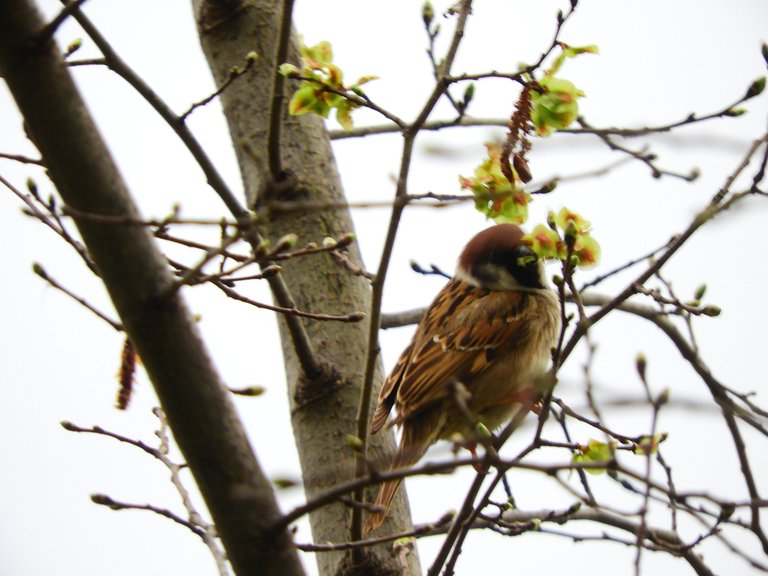
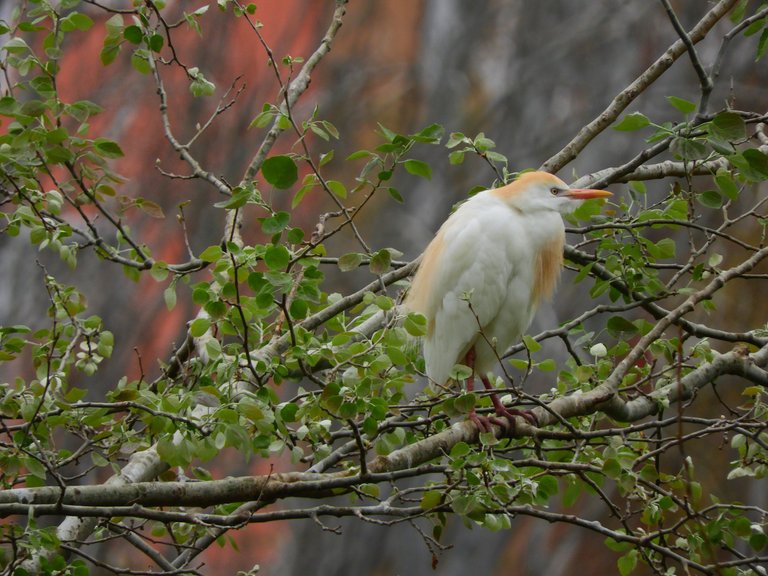
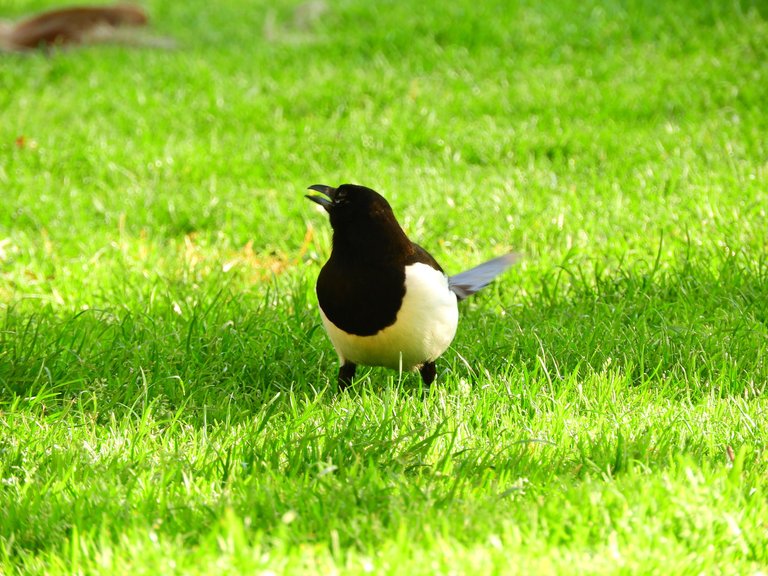
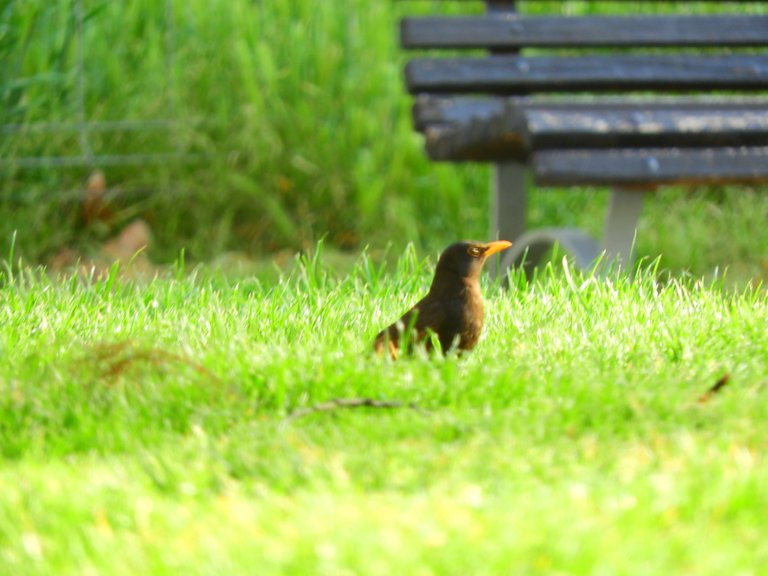
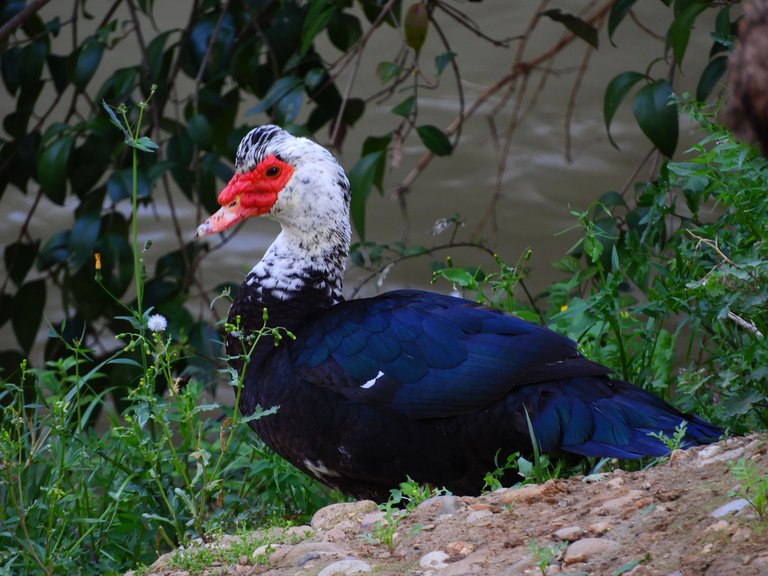
Good morning, dear friend @germanaure
What a beautiful birdwatching experience! You were able to observe some beautiful species.
I appreciate the information you share about these precious birds and the beautiful photographs.
Enjoy your weekend.
Top bird's shots @germanaure!!!
!discovery 30
!PIZZA
This post was shared and voted inside the discord by the curators team of discovery-it
Join our Community and follow our Curation Trail
Discovery-it is also a Witness, vote for us here
Delegate to us for passive income. Check our 80% fee-back Program
$PIZZA slices delivered:
@jlinaresp(3/15) tipped @germanaure
Moon is coming
Beautiful birds and a very productive walk. I like the magpie, I don't remember seeing one outside of cartoons. 😜
¡Felicitaciones!
Estás participando para optar a la mención especial que se efectuará el domingo 20 de abril del 2025 a las 8:00 pm (hora de Venezuela), gracias a la cual el autor del artículo seleccionado recibirá la cantidad de 1 HIVE transferida a su cuenta.
¡También has recibido 1 ENTROKEN! El token del PROYECTO ENTROPÍA impulsado por la plataforma Steem-Engine.
1. Invierte en el PROYECTO ENTROPÍA y recibe ganancias semanalmente. Entra aquí para más información.
2. Contáctanos en Discord: https://discord.gg/hkCjFeb
3. Suscríbete a nuestra COMUNIDAD y apoya al trail de @Entropia y así podrás ganar recompensas de curación de forma automática. Entra aquí para más información sobre nuestro trail.
4. Visita nuestro canal de Youtube.
Atentamente
El equipo de curación del PROYECTO ENTROPÍA
you are really lucky to be able to observe those beautiful birds